Repurposing items is a great way to avoid filling up landfills and wasting valuable resources. Many common household items are actually useful in more ways than one, such as eggshells. First they hold your eggs, then they send vital nutrients back into your compost pile or are a great addition to your chicken feed to help produce more eggs.
However, there are some items that should never be repurposed. The best way to avoid waste is to avoid these products altogether, though some of them are standard parts of modern living.
Still, try to find alternatives when you can.
Motor Oil
Reusing motor oil for anything is a bad idea. It keeps our motors running smoothly but in the process it picks up flecks of metal and other gunk. I know that many people use it to treat and preserve wood but it’s a bad idea.
For one, it makes the wood more flammable and for another, you’re exposing your family to petroleum and other chemicals, which are known to be carcinogenic. Even synthetic oils contain a certain amount of petroleum, along with other toxic chemicals that are meant to lubricate your motor.
Waste oils may also contain toxic heavy metals such as arsenic, lead, cadmium and chromium.
Some people also use old motor oil to start fires. This is bad because it releases all of those chemicals into the air that you (and your neighbors) are breathing. Obviously, this is something that you want to avoid.
Instead, recycle your oil properly in approved containers. Most auto parts stores and garages offer this service free of charge.
Commercial Soda and Water Bottles and Styrofoam

If you want to repurpose plastic bottles, find ones that are made from #2, #4 or #5 plastics and recycle them when they become cracked, cloudy or discolored. Also, if you’re re-using them as drinking bottles, recycle them when the contents begin to taste like plastic. That is a sign that the plastic is degrading and can release toxic chemicals into the liquid.
If you use Lexan or #7 polycarbonate bottles for hiking, never put hot liquids in them and don’t expose them to sunlight that can warm the plastic. Also, don’t clean polycarbonate containers with hot water, harsh detergents or bleach.
Never reuse (or even use once if you can avoid it) #3 plastic (PVC), #6 plastic (polystyrene) and many #7 plastics (polycarbonate). They can leach toxins such s phthalates, dioxins and bishphenol-A into your food.
Even better, choose a stainless steel water bottle to reuse.
Aluminum Containers
Unless the container is coated internally with an enamel coating, don’t re-use aluminum dishes because the aluminum will leach into your foods.
The same goes for using them as starter planters for seeds. Aluminum has been linked to several different health conditions including Alzheimer’s disease.
Sawdust
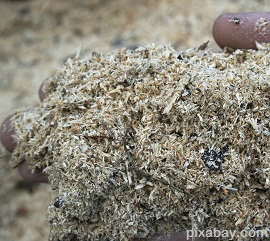
Often sawdust contains chemicals that were used to treat the wood.
Also, black walnut shavings are toxic to horses, causing skin irritation, fever, hair loss and even founder. Black cherry shouldn’t be used in stalls, either.
That being said, if you know exactly where the sawdust came from and the source was non-toxic, it’s fine to use in your compost pile or in your flower beds.
Meat and Milk
Meat should never be added to a compost pile and gray water tainted with meat should be sent to the sewer or septic because of bad bacteria that may be present. Also, chunks may clog your gray water system and using it in your compost pile will cause a horrible smell that attracts all sorts of rodents, flies and animals seeking a free meal.
Another reason not to add meat or milk to your compost pile is that it decomposes anaerobically. This means that it generates very little heat while it decomposes, and heat is a vital component of your compost pile. It’s the heat that encourages rapid decomposition and creates a healthy pile.
Walnuts and Walnut Shells

Though a handful of walnuts or shells won’t cause much damage, especially if your pile is large, you should find another way to discard large amounts of shells or nuts. Try putting the extra nuts in your bird feeders.
Just FYI, walnuts are toxic to dogs and horses, so don’t think you’re rewarding your pet by giving him walnuts.
Used Kitty Litter
Animal droppings from any type of carnivore should never be used in a compost pile. They’re a breeding ground for bad bacteria and can ruin your entire pile. The same goes for rice – cooked rice attracts bacteria that is bad for your compost pile and dry rice doesn’t decompose well.
Diseased Plants and Moldy Soil
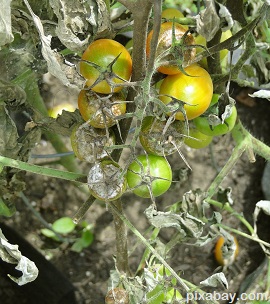
The same goes for the soil that the plants were in.
If the plant is diseased and you reuse or repurpose the soil to grow other plants, you’re simply transferring the disease to the new plants. Toss it in the garbage instead.
Heavily Coated or Colored Paper
While it’s fine to repurpose magazines, colored paper or wrapping paper, they should never go in your compost pile because the chemicals used to add the color and the gloss can be toxic.
The ink doesn’t break down properly so these items should be tossed into your recycling bin or repurposed as note paper, collages or, in the case of colored paper or comics, wrapping paper.
Used Cooking Oil
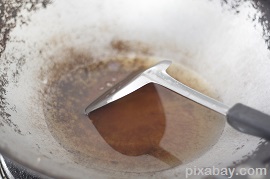
It shouldn’t be added to your compost pile either because it can disrupt the moisture level in your pile or will attract unwanted pests.
But turning it into biodiesel might be a solution to repurpose it.
Personal Hygiene Items
Though this may seem like common sense, single-use personal hygiene items such as tampons, pads, tissues and diapers should never be washed and reused, nor should they go on the compost pile.
They have been contaminated with bodily fluids and are not suitable for recycling, reusing, repurposing or composting.
Old Household Wood
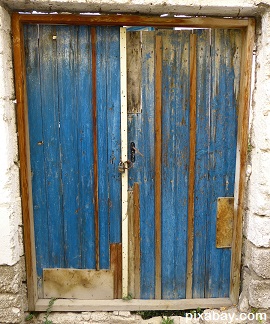
It was banned for use in household paints in that year but if you live in an older house, you likely have some lead-based paint in the original layers.
Don’t reuse old window sills, banister railings or anything painted when the house was built in any of your repurposing projects. Don’t burn them, either. Just send them to the dump.
In the scheme of things, there is very little that you can’t repurpose, recycle or add to your compost pile but these are a few items that you should avoid. If you can think of anything else that shouldn’t be repurposed or added to the compost pile, please add them in the comments section below.
This article has been written by Theresa Crouse for Survivopedia.


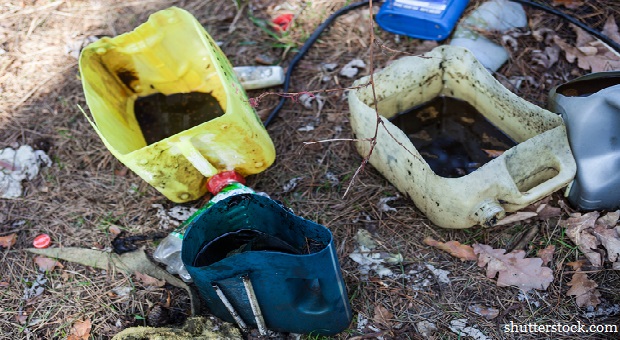


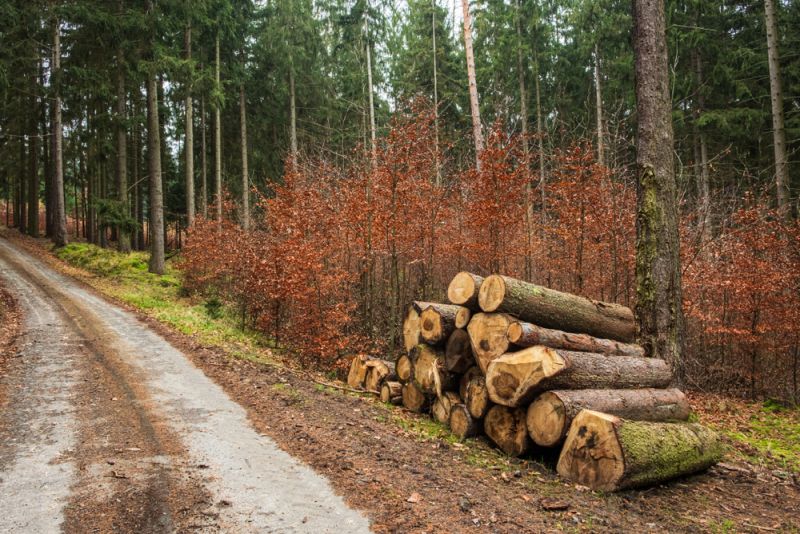

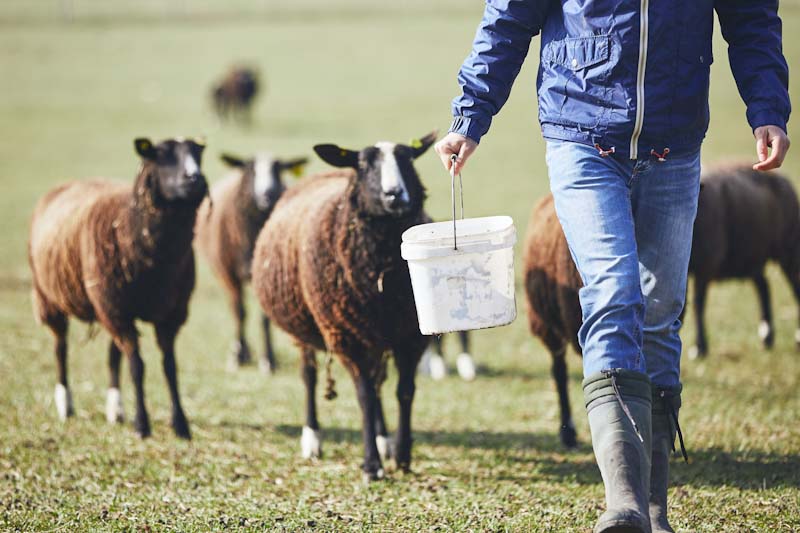


Susan Shafer | June 30, 2015
|
I’ve seen you-tube videos where plastic pop bottles are incorporated into building houses. The are cemented together, I think. Look for the videos if you are interested.
Paul Mason | June 30, 2015
|
Ms. Crouse is too young to remember that ALL diapers were cloth, and were washed and reused until paper diapers came in about 1955. Just add bleach, soap, and let it sit for a few hours or overnight. Then run them through your old top-loading washing machine or put in a wash-tub and agitate with a paddle, and then run them through your hand-operated wringer. Than hang on the line in the sunlight. They will turn out bright white and fine.
Charlotte | June 30, 2015
|
This applies to the old cloth diapers, right? Not to the disosable ones…….
I raised my children with cloth diapers and they stayed white and clean. Just couldn’t bring myself to tape plastic on their little behinds, I preferred the soft, clean cotton.
ca
Elizabeth miller | July 7, 2015
|
100% cotton cloth diapers hung to dry in sunshine were the oldest, best method of relieving and preventing diaper rash. When they get too old for diapers, they make wonderful dust cloths, padding and baby animal bedding. Very multipurpose! Clean, the rags also prevent frost damage to garden plants and ultimately, compost.
susana | June 30, 2015
|
I’m seeing a lot of ads lately for “reusable” paper towels made from bamboo. They can apparently be washed a time or two before they must be discarded. Admittedly, they are intended for jobs such as wiping up spills on counters or floors, so they’d normally be discarded in the trash, not the compost, though I line containers with paper towel to dump into the compost, and I see no reason why the bamboo can’t also be composted.
As for diapers, there is now a resurgence of interest in the bidet / toilet, which washes the “privates” and calls for washable towels instead of paper. These would also go in the wash machine though likely would not need as much pre-laundry prep as the soiled diapers that covered my daughters’ backsides “back in the day.”
radarphos | June 30, 2015
|
Well, I agree with Paul, as one who wore those old diapers when I was toddling around. However, I think many of those days were the “good old days” when aside from lead paint/varnish/tile, and asbestos exterior siding, and PCBs in electrical cords/products, and the old termite poison that was banned, and the mercury teeth fillings that we called “silver”, but to the best of my knowledge it was never silver, only silver colored (when new) poisonous mercury (as it is today when used), such that aside from the poisons of our generation and “in the good old days”…I think there are lot more poisons today and too many to count and keep track of. About a year ago I read an article, I believe by a former Surgeon General, who suggested that the youngest generation of kids today will probably not experience the lifespan of those who grew up “in the good old days”. Why? Toxins in food, water, vaccines, Big Pharm, dentistry, air, just everywhere…etc. I agree with Theresa on her suggestion; though if all I had was cotton for a diaper, that is what I would use and re-use (after a serious washing).
Great Grey | July 1, 2015
|
Silver fillings really do have silver. In dentistry, amalgam is an alloy of mercury with various metals used for dental fillings. It commonly consists of mercury (50%), silver (~22–32% ), tin (~14%), copper (~8%), and other trace metals.
Allison | June 30, 2015
|
She said “single-use” hygiene products should not be reused…and qualified the statement with “This may seem like common sense”. Yes, cloth diapers can be washed and reused, as can reusable sanitary pads or products like the Diva Cup. That’s what they were designed for. What you are not supposed to do is put human waste or bodily fluids on your compost pile.
Richard | July 5, 2015
|
greetings. have you heard of humanure? it is human body excretions that are composed with nitrogen deficient organic materials like saw dust or garden wastes. once composted they become benign and are usable for fertilizer as is done in most of the world other then America. only here do we fear one of our natural fertilizers so fiercely . once composted it no longer is a danger to the ground water or us. are books on it titled Humanure. believe you can find them on the net. I did.
Elizabeth miller | July 7, 2015
|
I used my urine for years, diluted to 7 parts water, on trees and bushes. I didn’t use it steadily for trees and bushes as it made them grow fast but they seemed weaker. I think the roots picked up the minerals as needed and probably purified much toxins. I never used it in the garden or on anything edible.
Even at that ratio it was too much nitrogen for compost and I worried about the minerals, drugs (including from nonorganic food) and bacteria. Yes, urine itself is sterile unless there’s a bladder infection, but as it leaves the body it picks up a lot. Think of the elaborate sterile urine collection procedures for lab tests. I lived in suburbia and called it ‘bio-grow’ ;-). Only a few people close to me knew.
slo mo | June 30, 2015
|
I think I need to recycle my wife, she just is’nt working anymore
lEWIS | June 30, 2015
|
from the Alzheimer’s Association at:
http://www.alz.org/alzheimers_disease_myths_about_alzheimers.asp
comes this excerpt:
Alzheimer’s Myths
Myth 4: Drinking out of aluminum cans or cooking in aluminum pots and pans can lead to Alzheimer’s disease.
Reality: During the 1960s and 1970s, aluminum emerged as a possible suspect in Alzheimer’s. This suspicion led to concern about exposure to aluminum through everyday sources such as pots and pans, beverage cans, antacids and antiperspirants. Since then, studies have failed to confirm any role for aluminum in causing Alzheimer’s. Experts today focus on other areas of research, and few believe that everyday sources of aluminum pose any threat.
And, Scientific American goes into far greater detail to reach the same conclusion:
http://www.scientificamerican.com/article/is-there-any-proof-that-a/
Elizabeth miller | July 7, 2015
|
I do medical research and it’s true no link was established between aluminum and any dementia or mental decline. Many doctors I knew stopped using antiperspirant and cooking utensils with it – and most I know still don’t, though.
radarphos | June 30, 2015
|
On the subject of lead paint, much more needs to be said. Lead was added to more than paint prior to 1978. It was added to varnishes for floors and furniture. It was added to old floor tiles (that may be underneath newer tiles). Lead is extremely dangerous to young children because it goes to their organs, because their bodies cannot differentiate lead from other minerals like calcium. For adults it goes to their bones. I’ve seen pictures of the web of a grandma’s wrist X-rayed for arthritis pain, when what she had was build up of lead accumulating at the bone joint (the end of the bone, where it attaches to the cartilage). When i saw it I thought “hell”, no wonder all the old timers older than me had rheumatism and arthritis…most of it was really lead causing inflamation. England prohibited lead in paint in the early 1900s; but good Ole Uncle Sam waited until 1978. Then, there is another problem. When people who had a lot of paint new the lead paint was going to be banned…they got rid of it by donating it to Camps, Churches, non-profits to get a tax write off; such that even though it was banned from the paint store in 1978, there was still plenty of it around and being used in homes after 1978.
On the subject of motor oil, I’ve added old “oiled gasoline” (I forget what it is called, –you know, like 2 oz motor oil to 1 gallon gas to certain kinds of small engines–I think it is 2-cycle engines) to my car, when this oiled gasoline started getting old. It didn’t cause any problems that I know of, but I didn’t have more than 1/2 gallon, added to a gas tank with about 5 gallons in it. But, no, I don’t try to mix old oil in auto gas to dispose of it. I recycle it.
Barbara Kaminski | June 30, 2015
|
A master gardener told me that green/clear soda/milk bottles can be used for creating a hot house effect on seedlings planted early in the garden. Cut off bottoms of bottles and place top half over seedling plant. Take off cap once it begins to warm up. At night, if cold, replace bottle cap. We recently had a severe thunderstorm with high winds and I put the bottles over the plants and they survived just fine.
CyBER Geezer | June 30, 2015
|
The author sounds to me like they will be unable to function if/when society collapses. They probably are one of those who throw food and water away because the Expiration Date has past. Why not tell people that how we knew canned foods were bad before they pulled the so-called EXP Date out of thin air and made a couple of generations believe that it was based of sound science when it was NOT!
Elizabeth miller | July 7, 2015
|
“sell-by’ dates have two reliable functions: 1. corporate lawyers advised them to deflect lawsuits (and justify their salaries). 2. more products get sold when useable ones are thrown out.
Leland Schwarz | June 30, 2015
|
Helpful article. #1 plastic was overlooked. It it’s the most and most easily recycled. Neither #4 nor #5 are recyclable in many places.
duggy dugg | June 30, 2015
|
good to know about the different plastic grade numbers..
INVSBLTY | June 30, 2015
|
Well done, Theresa!
Composts work well when the material is added correctly. They need to be layered with degradable material and no cooked kitchen scraps. Also, according to Scott and Helen Nearing, you can put a “chimney” in the center of the compost pile in a vertical manner that rests on a matching horizontal chimney that runs through the bottom of the pile. The chimney is made of lashed together saplings approximately 1 to 1 1/2″ in diameter, and a combined diameter of ten inches. The chimneys help to aerate the compost pile to speed up the process of decomposition.
Great Grey | July 1, 2015
|
Used cooking oil filter it and use it for homemade oil lamps, floating wicks candles. Also you can use cooking oil that has gone bad.
Richard | July 5, 2015
|
good idea never to use rape seed oil (canola) and other not really natural oils. safer to simply use lard. natural. biodegradeable and burnable. worked for humans for thousands of years before Monsanto. still works.
Richard | July 5, 2015
|
on recycling. would be wise to check out bio gas or carbon monoxide which was the city gas used before rockerfeller popularized petroleum and natural gas. ever town had a gas house that smoldered garbage and created monoxide that was then piped to the homes and businesses. no land fills in the old days, only now. many of the cities did not have natural gas available until recently. they simply made their own and added a scent to it so one could better detect leaks. check and you will also find monoxide was used as a motor fuel during world war 1, world war 2 and even now is not forgotten. you can order a new Swedish Volvo with a monoxide generator in the trunk right from the dealers. runs on wood waste that is smoldered to get monoxide on the road. no gasoline needed. to bad we are not bright enough to use it anymore.
Pingback:12 Items You Should Never Repurpose Or Compost | TheSurvivalPlaceBlog | July 6, 2015
|
Pingback:Having Fun Preserving The Past | What's New in Eco-Materials | July 26, 2015
|
L | August 6, 2015
|
Walnut Shells can be used for fire in a BioLite or rocket stove, & when ground, can be used as a texture in paint or any handcraft (e.g. pottery).
Pingback:12 Creative Survival & Homesteading Uses For Coffee | Survival skills, survival guns, survival guide | November 3, 2015
|
Pingback:12 Survival & Homesteading Uses For Coffee | Prepper's Survival Homestead | November 3, 2015
|
Pingback:12 Survival & Homesteading Uses For Coffeedisasterdefense.us | disasterdefense.us | November 4, 2015
|
Pingback:How To Use Feathers For Your Homestead - Survival By Preparedness | December 16, 2015
|
Pingback:How To Use Feathers For Your Homestead - Backdoor Prepper | December 17, 2015
|
Pingback:20 Early Spring Edibles: How And When To Grow Them - Bio Prepper | March 22, 2016
|
Pingback:12 Survival & Homesteading Uses For Coffee - Prepper Dome | May 28, 2016
|
Pingback:4 Ways To Help Your Plants Survive A Heatwave | Prepper's Survival Homestead | June 30, 2016
|
Pingback:10 Ways For Preppers To Use Egg Crates | Survivopedia | August 2, 2016
|
Pingback:How to Make And Use Liquid Manure Compost | Survivopedia | October 31, 2017
|